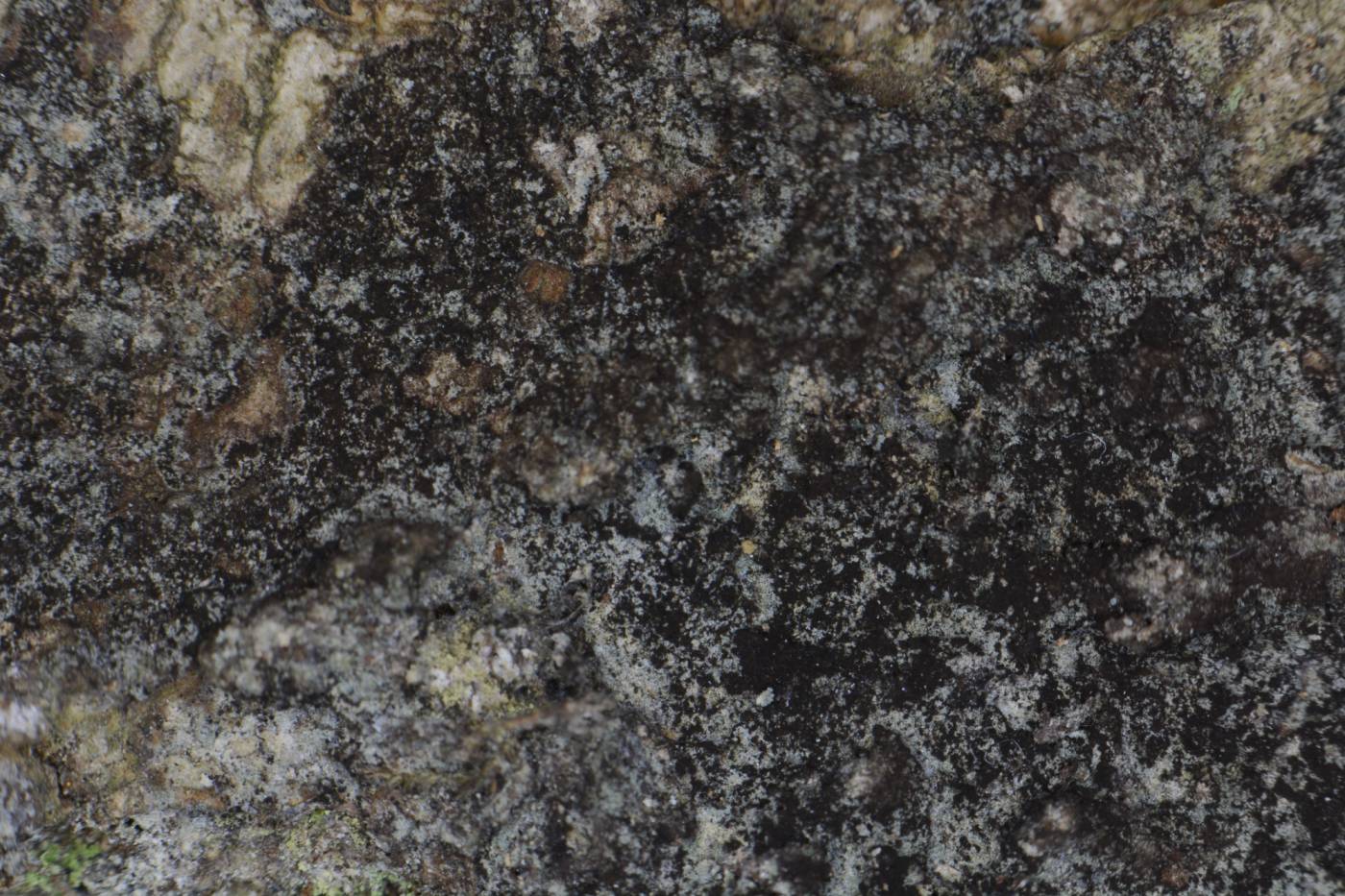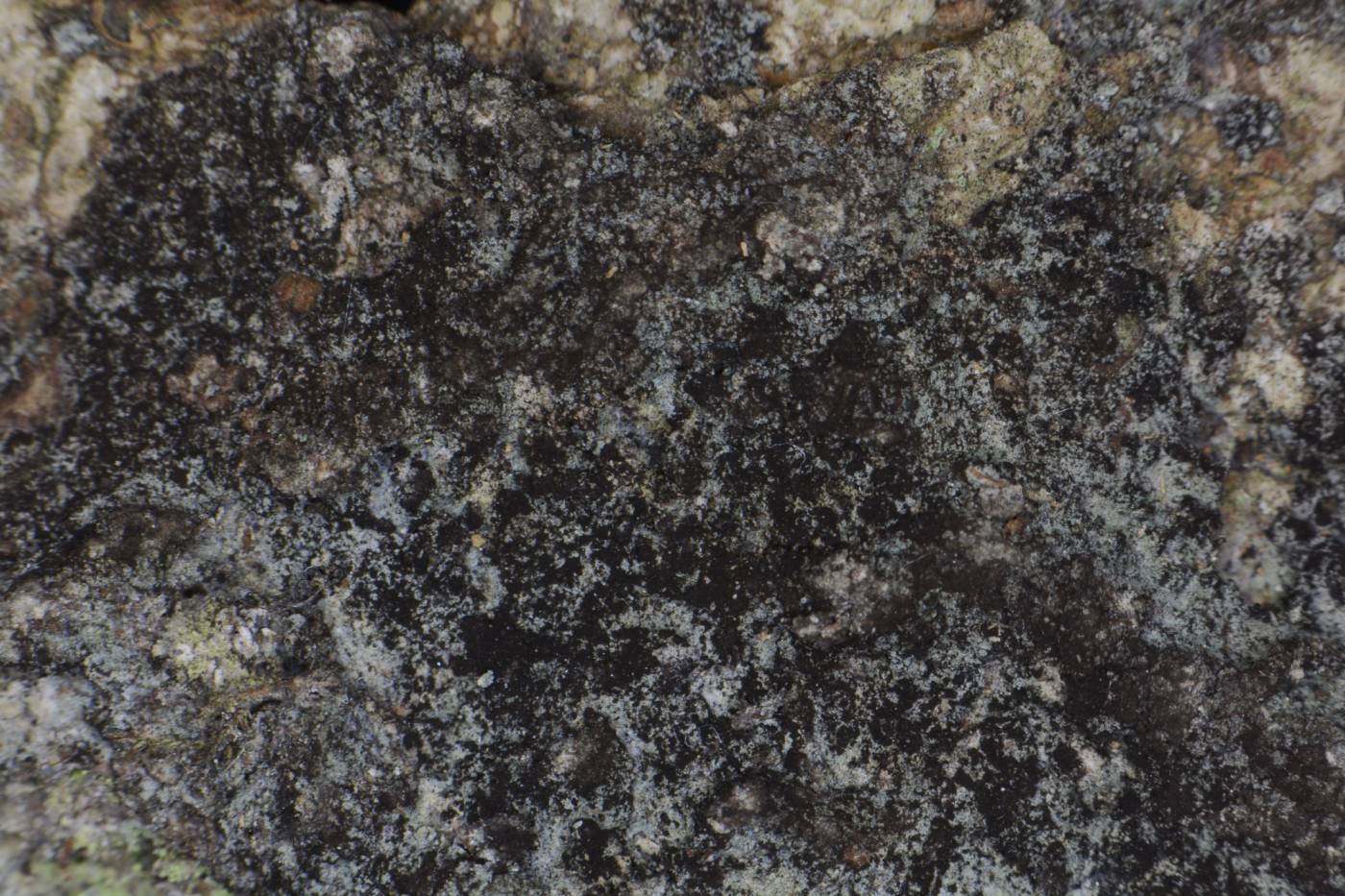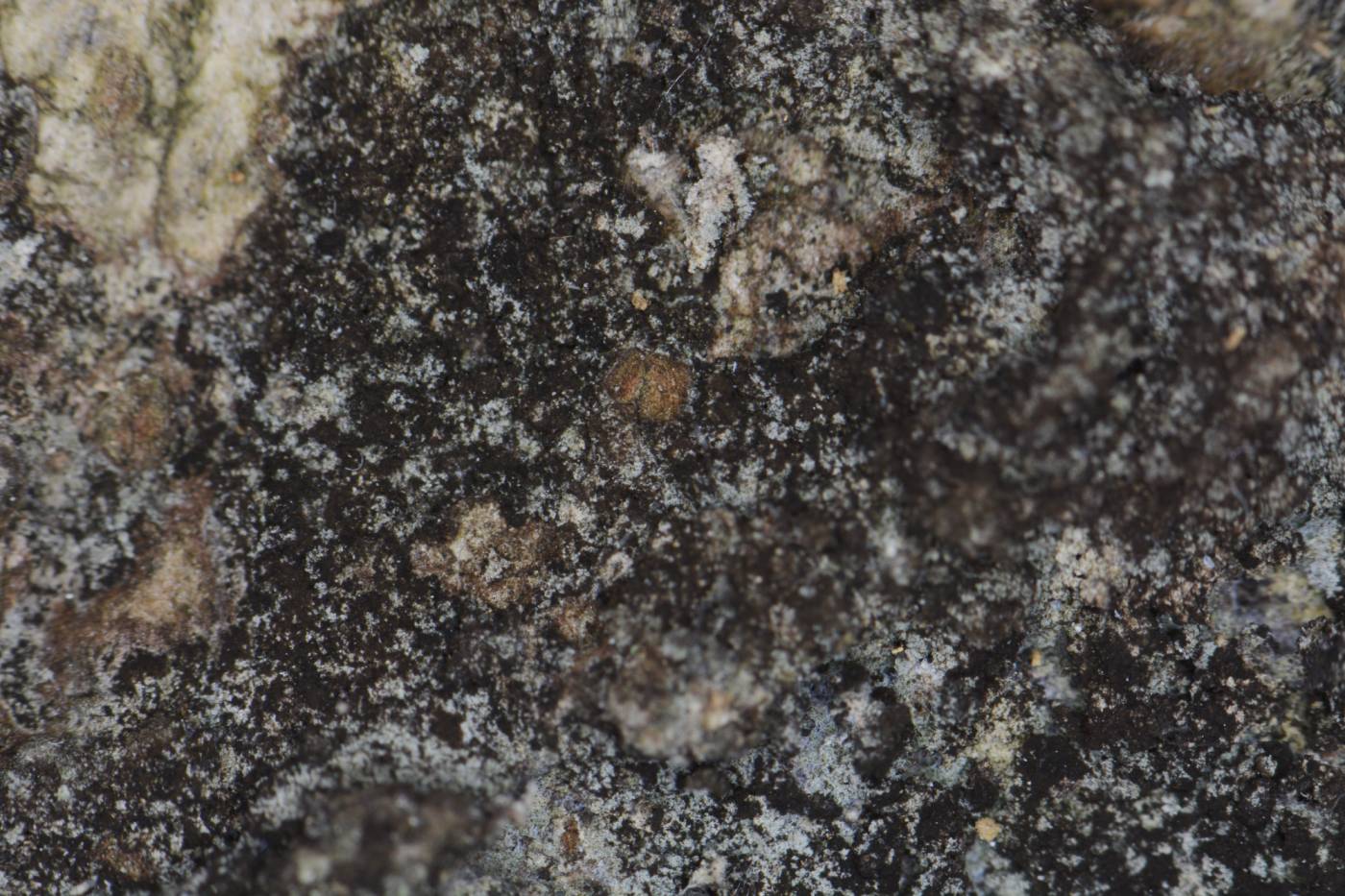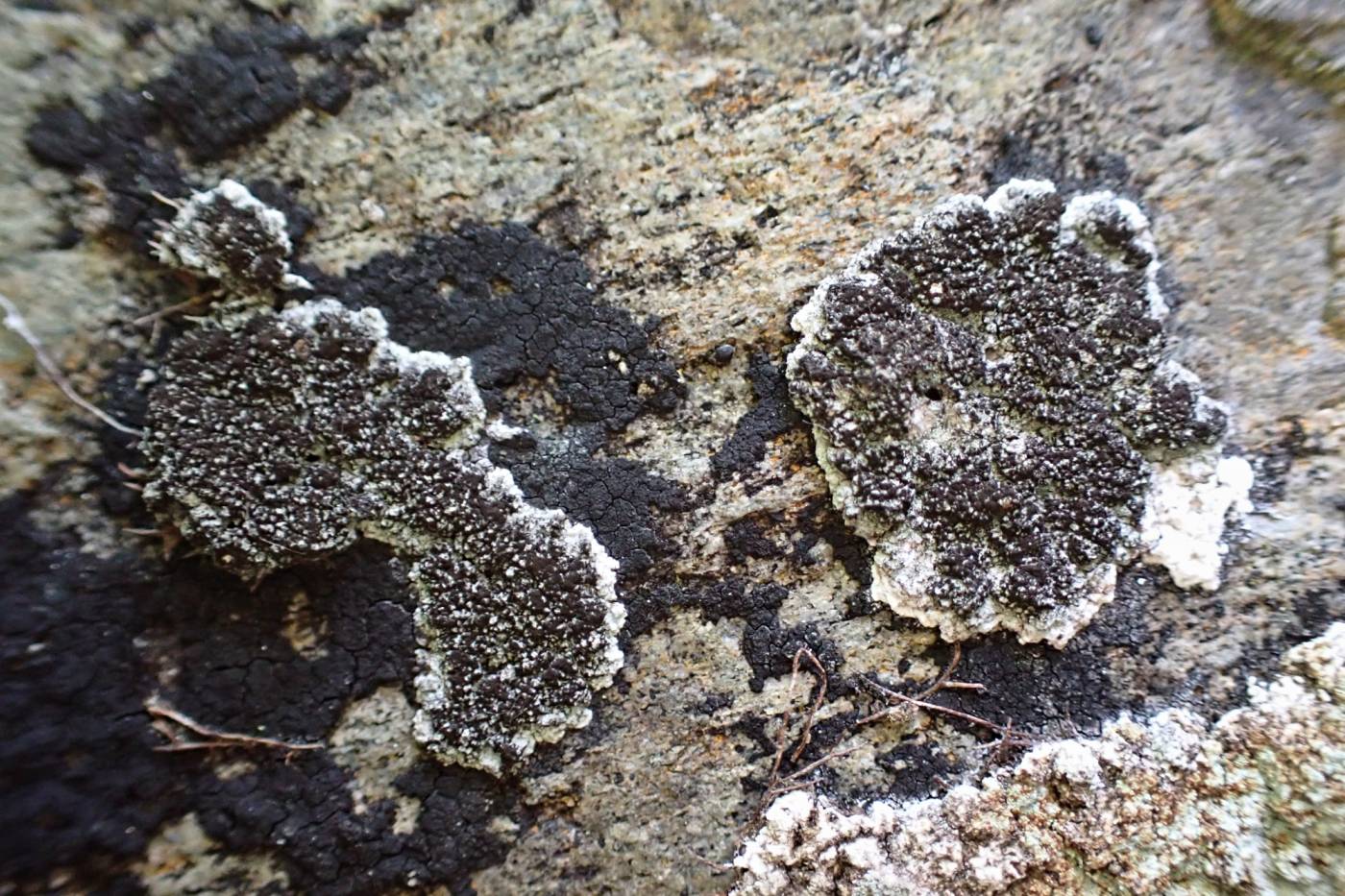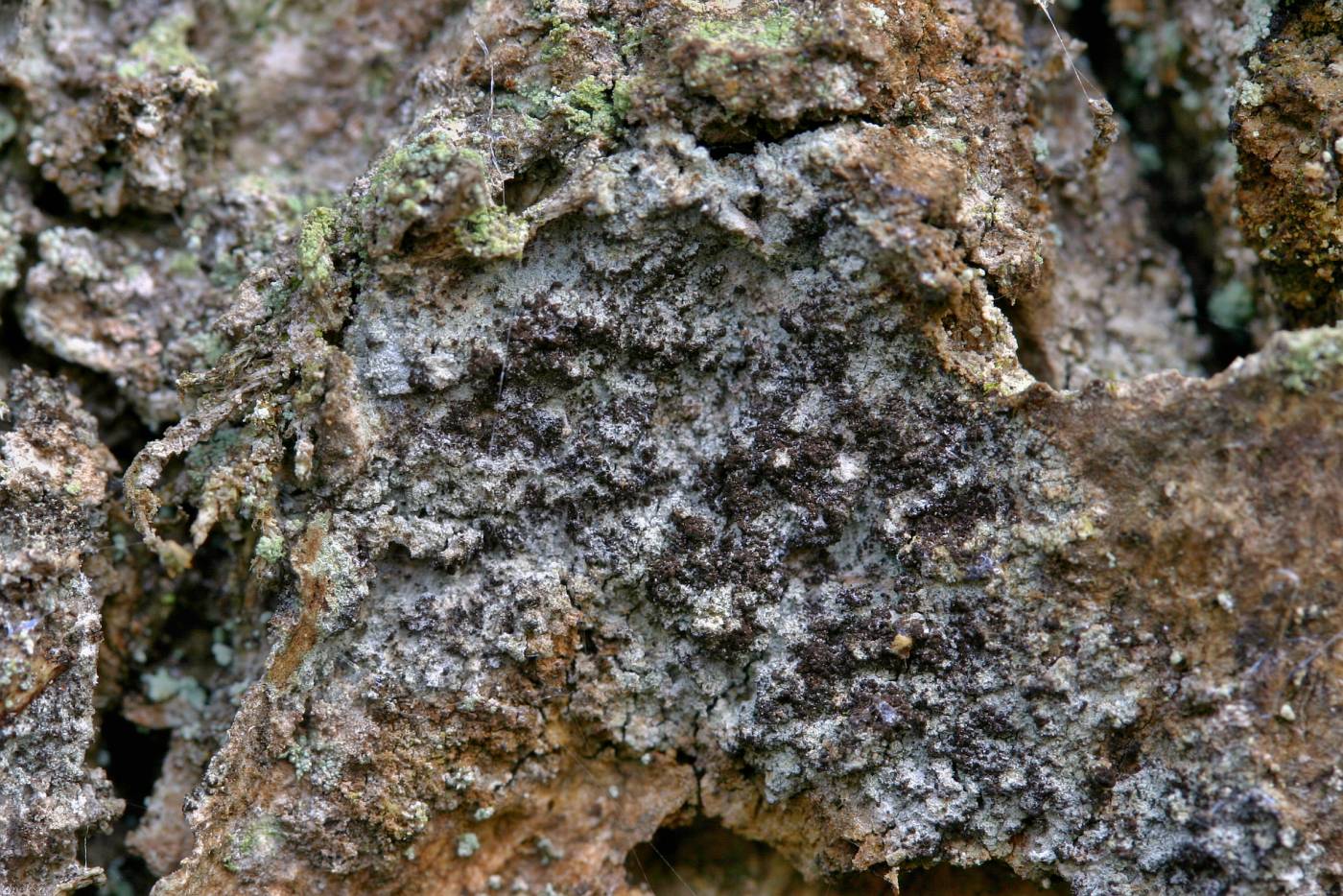This non-lichenized hyphomycete was originally described as a lichenicolous fungus parasitic on an unknown sorediate Trentepohlia-containing lichen (Diederich & Scheidegger 1996). In the Czech Republic, it was also first published as a lichenicolous fungus (Kocourková 2000). But the chocolate-brown layer of conidia is obviously produced by a leprose thallus. It grows on overhanging shaded siliceous rocks and dry tree bark (especially of deciduous trees) in humid microstands, such as watercourse valleys. It is rare in Europe and the Czech Republic but may be partially overlooked. There are individual scattered records from the southern part of the Czech Republic area.
Literature: Diederich P. & Scheidegger C. (1996): Reichlingia leopoldii gen. et sp. nov., a new lichenicolous hyphomycete from Central Europe. – Bulletin de la Société des Naturalistes luxembourgeois 97: 3–8. Kocourková J. (2000): Lichenicolous fungi of the Czech Republic (the first commented checklist). – Acta Musei Nationalis Pragae, Ser. B, 55: 59–169.
taxonomic classification:Ascomycota → Arthoniomycetes → Arthoniales → Arthoniaceae → Reichlingia
Red List (Liška & Palice 2010):DD – data deficient
Red List (Malíček 2023):C3 – endangered
Occurrence in the Czech Republic
All records: 43, confirmed 42. One click on a selected square displays particular record(s), including their source(s).
